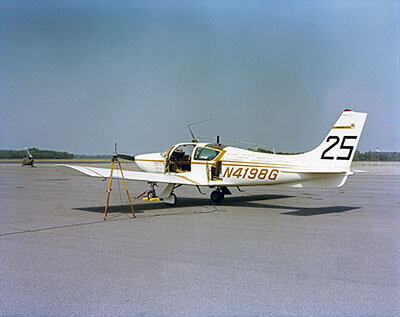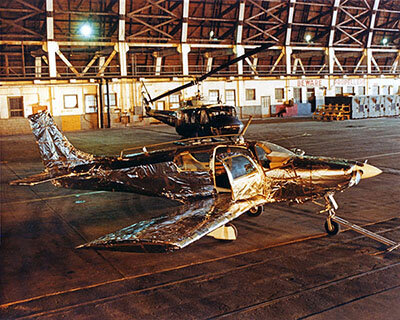From Plane & Pilot March 2021:
"In addition to the first two prototypes, only six more Eagles were constructed. Of the eight total airframes, one was lost in testing, three are in museums, and thankfully one was fully restored to fly- ing condition in 2015."
"As in all really good stories, there is a top-secret side. The U.S. Air Force purchased a military version of the Eagle and later transferred it to the Army. As it turns out, Leo Windecker understood the stealth value of composite materials and convinced the military to take a look. The aircraft, dubbed the YE-5, was pylon tested against radars at Holloman AFB, New Mexico. Of course, the test results were classified. However, Windecker Industries earned a follow-on contract to construct 36 composite “Laser-Target Designator” Remotely Piloted Vehicles (RPVs) for the Army. Sadly, none of this saved Windecker Industries."
According to the Smithsonian:
"The Air Force really wanted the YE-5 airplane so that it could test the radar reflectivity and stealth characteristics of the all-composite construction. The Air Force transferred it to the U.S. Army which wanted to test it for possible use as a utility airplane. The airplane was then sent to the Army Aviation Museum for display. There was also a seventh civilian Eagle I being constructed, but it was never completed before the company went into receivership."
https://www.si.edu/object/windecker-eagle-i:nasm_A19850619000
From Oklahoma Aviator:
"Sometime that year (1977), Dr. Windecker suggested to the U.S. Air Force that the composite construction of the Eagle might allow for a smaller radar return signature than metal airplanes. The Air Force subsequently tested N4195G at the RATSACAT test facility in New Mexico. The results were encouraging and the Air Force contracted with Windecker to deliver an Eagle, highly modified to further reduce the radar return. That airplane (S/N 009), designated as the YE-5 by the Air Force, was the last Eagle to be built. Thus, Windecker was an early participant in the development of the stealth technology that has become so successful today. In succeeding years, Windecker Research participated with Lockheed in the SAVOIR and AEQUARE Remotely-Piloted Vehicle (RPV) programs. In 1976, Windecker's Board of Directors suspended all operations and "closed the doors," withdrawing from the followon AQUILA RPV development." (Note: The picture I have is of N4195G being tested and not the airframe that the AF ordered designated YE-5 (i.e. with radar reducing internal components))








